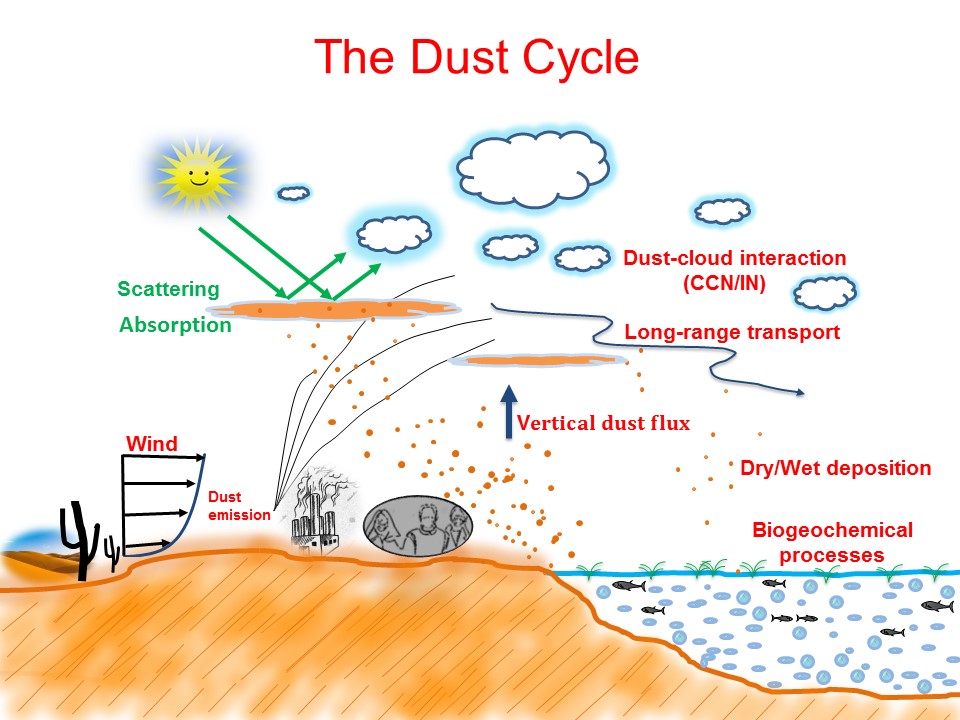
Why dust matters?
Mineral dust in the atmosphere predominantly affects Earth’s climate by scattering and absorbing shortwave and longwave radiation, which directly affects the surface temperature. More than that, it affects life on Earth, through its various direct and indirect interactions with the biotic and abiotic components of the Earth system. Dust affects the very basic process of rainfall through its direct and indirect effect thus regulates the hydrological cycle and the monsoon systems, which ultimately affects the distribution of water resources and agricultural production. Dust aerosols also fertilize aquatic and terrestrial plants as they supply essential nutrients such as Iron and Phosphorous through long-range transport. Severe dust storms can also reduce visibility, degrade air quality, and cause health and environmental problems. Therefore, a comprehensive understanding of the global dust cycle and its climatic and environmental impacts has significant scientific and practical implications.
Our current knowledge about dust aerosols is still limited. This is partially due to a lack of measurements particularly their mineral compositions, optical properties, and hygroscopic characteristics, and partially because we do not fully know the various direct and indirect pathways by which dust affects our climate and environment. Recent developments in global and regional climate modeling have enhanced our capability of solving complex processes of dust-climate-environment interactions. A growing number of satellite and ground-based observations have provided unprecedented opportunities to explore the various facets of their interactions with the living and the non-living world. In this context, there is a need to examine the effects of dust in our environment and climate through a fresh new perspective, which will help to reduce the large uncertainties in global and regional climate models in regards to current and future climate simulations.

